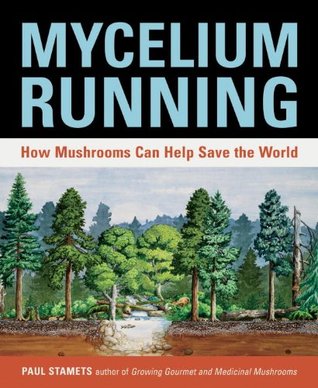More on this book
Community
Kindle Notes & Highlights
by
Paul Stamets
Read between
April 21 - April 29, 2024
There are more species of fungi, bacteria, and protozoa in a single scoop of soil than there are species of plants and vertebrate animals in all of North America.
Animals are more closely related to fungi than to any other kingdom. More than 600 million years ago we shared a common ancestry. Fungi evolved a means of externally digesting food by secreting acids and enzymes into their immediate environs and then absorbing nutrients using netlike cell chains.
This adaptive ability reflects the deep-rooted ancestry and diversity of fungi—resulting in the evolution of a whole kingdom populated with between 1 and 2 million species. Fungi outnumber plants at a ratio of at least 6 to 1. About 10 percent of fungi are what we call mushrooms
Saprophytic mushrooms, the decomposers, steer the course for proliferating biological communities, shaping and forming the first menus in the food web from dead plants, insects, and other animals. Most gourmet and medicinal mushrooms are wood decomposers, the premier recyclers on the planet; building soils is the primary outcome of the activities of these saprophytic fungi, whose filamentous mycelial networks weave through and between the cell walls of plants.
Primary Decomposers These saprophytes are typically the first to grow on a twig, a blade of grass, a chip of wood, a log, a stump, or a dead insect or other animal. Primary decomposers are typically fast growing, sending out rapidly extending strands of mycelium that quickly attach to and decompose plant tissue. These woodland species include oyster mushrooms (Pleurotus species), shiitake (Lentinula edodes), and maitake (Grifola frondosa).
Secondary decomposers rely on the activity of primary fungi that initially, although partially, break down plant and animal tissues. Secondary decomposers all work in concert with actinomycetes, other bacteria, and fungi, including yeasts, in soil in the forest floor or in compost piles.
Cultivators exploit this sequence to grow the white button mushroom (Agaricus bisporus), the most widely cultivated mushroom in the world.
Chanterelles are one of the most popular collected mushrooms. In the Pacific Northwest, harvesting chanterelles is a controversial, multimillion-dollar business. Unfortunately, the gourmet mycorrhizal mushroom species are not readily cultured. Chanterelles demonstrate an unusual interdependence on soil yeasts, making tissue culture difficult. At least 4 organisms must be cultured simultaneously: the host tree, the mushroom, pseudomonas bacteria, and soil yeasts (red soil yeast, Rhodotorula glutinis, is needed for stimulating spore germination and healthy mycelial development). Not only do
...more
Is this the largest organism in the world? This 2,400-acre site in eastern Oregon had a contiguous growth of mycelium before logging roads cut through it. Estimated at 1,665 football fields in size and 2,200 years old, this one fungus has killed the forest above it several times over, and in so doing it has built deeper soil layers that allow the growth of ever-larger stands of trees. Mushroom-forming forest fungi are unique in that their mycelial mats can achieve such massive proportions.
For every mile of paved road in Washington, there are more than 7 miles of unpaved roads.


